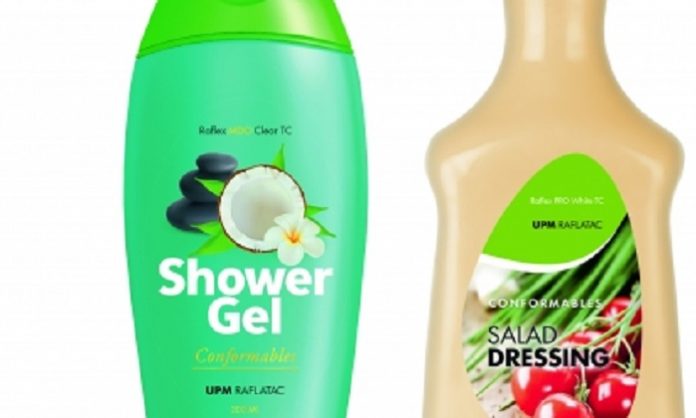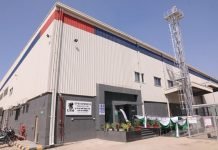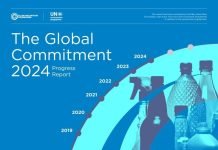For high transparency on contoured and semi-squeezable containers, UPM Raflatac is now introducing Raflex PRO – an advanced flexible film for applications where polypropylene
(PP) would be too rigid. This versatile material joins the Raflex family of conformable films alongside Raflex MDO, a high-performance and eco-designed solution for squeezable containers that have previously been reliant on polyethylene (PE) labeling materials.
Films retain their functionality, stability, and visual appeal even when exposed to humidity, water, chemicals, grease, oil, or UV light, giving them a big advantage over paper label faces. The traditional choices have been PP for transparency or polyethylene (PE) for flexibility, with a compromise needed to choose between their very different strengths. Raflex films help to avoid that compromise by combining the best properties of PP and PE in a single material – offering both conformability and high transparency for a wide variety of containers.
For applications where PP would be too rigid, Raflex PRO gives a highquality, no-label look for contoured and semi-squeezable containers, combining an ultra-clear, high-gloss finish with good conformability. It is perfect for home and personal care, food, and beverage applications, offering chemical resistance and stability even in challenging conditions. Raflex PRO is just as thin and light as PP and supports good print results even without a topcoat.
Raflex MDO is aimed for squeezable applications, such as home and personal care products, that have traditionally been reliant on PE. It offers a transparent no-label look with excellent flexibility, while its high stiffness in the machine direction ensures good
dispensing performance. As it is notably thinner than PE it contributes to higher productivity in label conversion and dispensing by yielding more labels per roll with fewer changes. Raflex MDO also has good on-press stability and can be printed without a topcoat.











